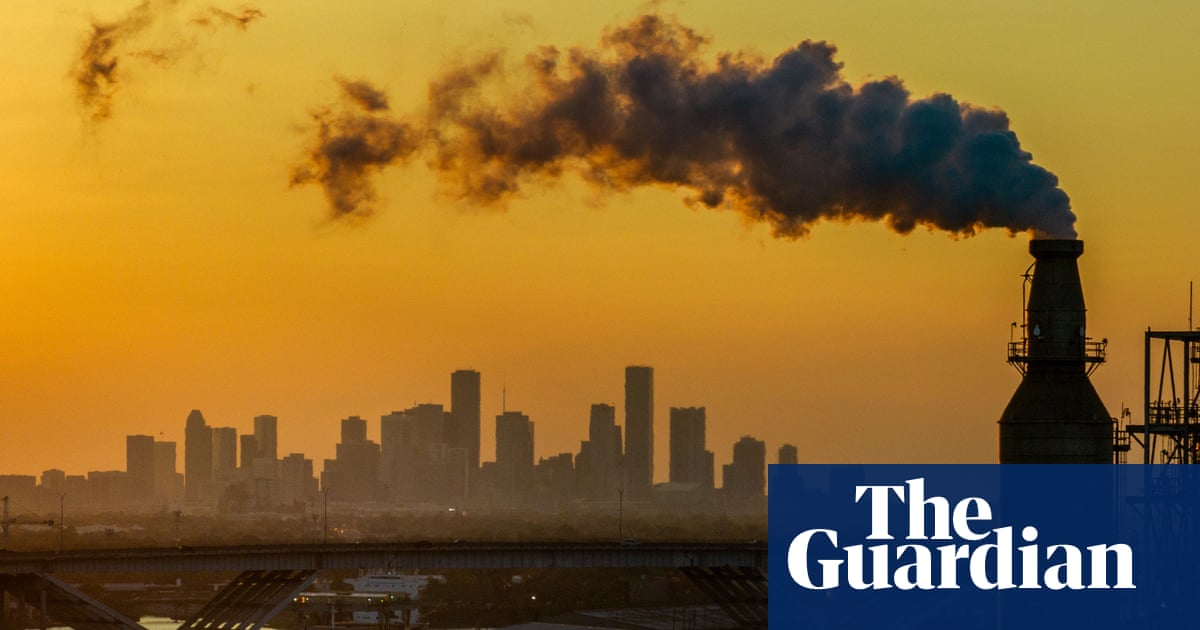
The United States and 30 countries have agreed to release 60m barrels of oil from their strategic reserves to stabilise global energy markets, the US Department of Energy said on Tuesday, as oil prices surged to a seven-year high.
The move, ahead of Joe Biden’s State of the Union address to Congress, failed to calm fears about supply disruption from the Ukraine crisis and sanctions against Russia. US stock markets fell sharply even after the news.
Oil prices surged after the announcement, with US crude hitting its highest level since June 2014 as Russia bears down on Ukraine’s capital.
West Texas Intermediate crude futures, the US oil benchmark, jumped 11.3% to $106.50 a barrel before dropping back to $105. International benchmark Brent crude advanced 9.5% to trade at $107 – the highest since July 2014 – before falling to $103.
The price surge marks a return to oil prices pushing through the $100-mark since last Thursday when Russia invaded Ukraine. An energy squeeze in what is already a tight market has some analysts fearing oil could top $150 in the coming months.
Biden has repeatedly sought to prepare US consumers for higher gas prices. “I will not pretend this will be painless,” he said on Tuesday, adding that his administration was “prepared to deploy all the tools and authority at our disposal to provide relief at the gas pump”.
OPEC and its oil-producing allies, which includes Russia, are set to meet this week to discuss output for April.
Morgan Stanley raised its near-term oil price forecasts, saying the events in Ukraine have introduced a “risk premium in oil prices that is likely to remain in coming months”.
The bank now sees Brent averaging $110 in the second quarter of the year, up from a prior forecast of $100. Under the firm’s most upbeat case, prices will jump to $125. “Against a backdrop of market tightness, even small disruptions can have large price impacts,” the firm added.
The coordinated decision – the fourth such effort in the International Energy Agency (IEA)’s history – to release 60m barrels of oil from global reserves is unlikely to have an immediate impact on oil prices.
US strategic reserves are held in Texas caves, and not immediately accessible to refiners. US energy secretary Jennifer Granholm said the US, which released 30m barrels, was “prepared to take additional measures if conditions warrant.
“The situation in energy markets is very serious and demands our full attention,” IEA executive director Fatih Birol said in a statement. “Global energy security is under threat, putting the world economy at risk during a fragile stage of the recovery.”
According to the agency, the 60m barrel release accounts for 4% of members’ emergency stockpiles of 1.5bn barrels. The number is equivalent to about six days of Russian production, and about 12 days of Russia’s exports.
“60m barrels isn’t that much. That’s the bottom line at the end of the day,” Bob Yawger, director of the futures division at Mizuho Securities USA, told CNBC. He noted that 60m barrels does little to meaningfully move the needle and is not enough to absorb lost supply from Russia.
However, Rebecca Babin, senior energy trader at CIBC Private Wealth, said that while the move was expected, it could offer a “modest buffer in the short term”.
“It is not meaningless, it simply pales in comparison to a true supply disruption from Russia,” Babin added.
US and European trade sanctions on Russia leave exemptions for energy, with Europe as a whole reliant on Russia for around one third of its oil and gas imports.
But a recent deal between Moscow and Beijing to supply surplus Russian gas to China suggests there are available work-arounds if western sanctions are extended to energy.
On 2 February, Russia and China agreed a 30-year contract to supply gas to China via a new pipeline and will settle the new gas sales in euros. The deal, between Gazprom and the Chinese state energy major CNPC, is for 10bn cubic metres of gas a year.
Under previous agreements, Russia will supply China with 38 bcm of gas by pipeline by 2025. But the new deal, signed during Russian president Putin’s visit to the Beijing Winter Olympics, increases the commitment.
Last year, Russia exported 16.5 bcm of gas to China via its Power of Siberia pipeline, which began pumping supplies in 2019, and by shipping liquefied natural gas (LNG). A new pipeline connecting Russia’s Far East region with north-east China is due to begin transmission in two to three years.
In the event of western sanctions on Russian oil, Chinese companies are expected to take advantage of discounted Russian oil. Russia is currently China’s third-largest supplier of seaborne crude after Saudi Arabia and Iraq, according to data compiled by Bloomberg. In January, imports averaged 811,000 barrels a day.
Ukraine has called for oil and gas sales to stop, with Dmytro Kuleba, the foreign affairs minister, calling for an embargo. On Monday, BP said it would sell its stake in Rosneft PJSC, and Shell is dropping out of a Russian gas project.
But China, says energy analysts, is no stranger to devising work-arounds to western sanctions, including buying cheap oil from US-sanctioned regimes in Iran and Venezuela.
“China is likely to continue buying Russian crude both for its operational needs and for restocking,” Michal Meidan, director of the China Energy Research Programme at Oxford Institute for Energy Studies, told Bloomberg Tuesday.
“Even if it’s sanctioned, it can settle oil in yuan or rubles and, as we have seen with Iran and Venezuela, some buyers that do not have international exposure can work around sanctions,” said Meidan.












